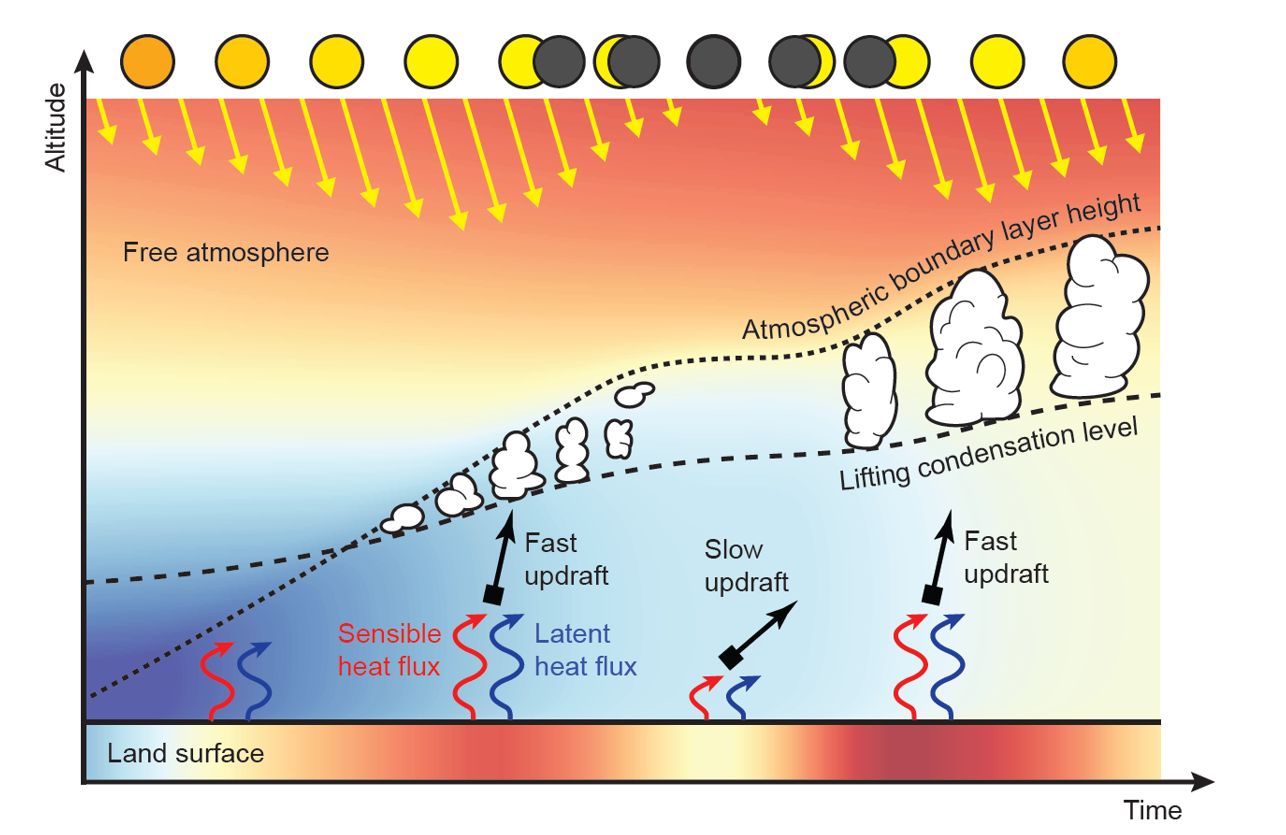Clouds disappear quickly during solar eclipse
Cumulus clouds over land start to disappear almost instantly during a partial solar eclipse. Until recently, satellite measurements during the eclipse resulted in dark spots in the cloud map, but researchers from TU Delft and KNMI were able to recover the satellite measurements by using a new method. The results may have implications for proposed climate engineering ideas, because disappearing clouds can partly oppose the cooling effect of artificial solar eclipses. The results were published today in Nature Communications Earth and Environment.
Although the effects of solar eclipses have been studied for centuries, it was unknown how strong clouds precisely react. "From Earth, you can count the clouds and watch them disappear, but that only provides anecdotal evidence," explains PhD candidate Victor Trees. "Even without a solar eclipse, clouds are constantly changing."
Measuring solar eclipses from space
Satellites in geostationary orbit can continuously measure many clouds simultaneously, in large areas including impassable terrain. During a solar eclipse, measurements were not reliable, because the satellite algorithms did not take into account the decrease in sunlight during solar eclipses. This resulted in large dark patches in the cloud maps.
Researchers now succeeded to restore satellite measurements during solar eclipses by accurately calculating the percentage of the sun that is obscured, for each location and time on Earth. “By far most of the solar eclipse consists of a partial eclipse, where there is still plenty of light outside. In this partial eclipse satellites receive enough reflected sunlight, after correcting for the obscuration, to reliably measure clouds.”
Cumulus clouds over land are very sensitive to solar eclipses
In the recovered cloud maps from three solar eclipses over Africa, the researchers saw that cumulus clouds started to disappear on a large scale starting from just 15% solar obscuration. Once the solar eclipse is over, the cumulus clouds return. On days when there is no solar eclipse, this cloud behaviour does not occur.
The disappearance and appearance of clouds has also been simulated successfully with the Dutch cloud model DALES. The model explains that the rising air is almost immediately affected when the partial eclipse starts. Above the sea, the clouds remain unaffected during a solar eclipse, because the seawater does not cool down that fast.
Possible implications for climate engineering
Currently, strategies to artificially cool the Earth are being proposed. For example, placing reflective solar sails into space or aerosols into the stratosphere. These concepts create a subtle and possibly varying solar eclipse. But, according to Trees' research, clouds begin to disappear on a large scale with only a partial eclipse. "This could be a warning for climate engineering. If we eclipse the sun in the future with technological solutions, it may affect the clouds. Fewer clouds could partly oppose the intended effect of climate engineering, because clouds reflect sunlight and thus actually help to cool down the Earth." In addition, clouds determine local precipitation patterns. The high sensitivity of clouds to solar eclipses calls for more research on the possible effects of artificial shadows.
Diminishing sunlight can lead to cooling of the ground. This slows down the rising air, responsible for the formation of cumulus clouds, so that cumulus clouds disappear. Once the solar eclipse is over, the ground warms up again and new cumulus clouds often form.
Read full publication
Victor J. H. Trees, Stephan R. de Roode, Job I. Wiltink, Jan Fokke Meirink, Ping Wang, Piet Stammes and A. Pier Siebesma. Clouds dissipate quickly during solar eclipses as the land surface cools. Nature Communications Earth & Environment. 12 February 2024.

